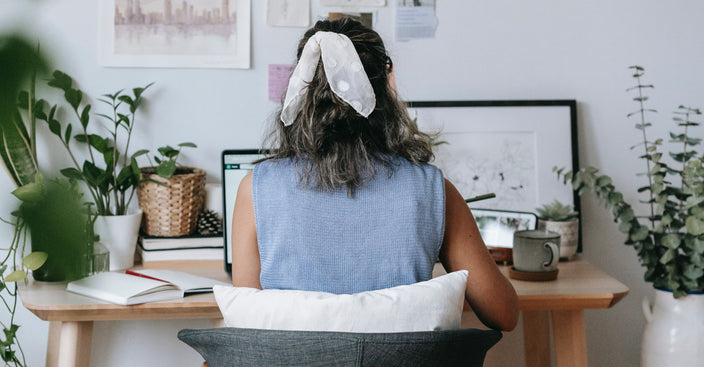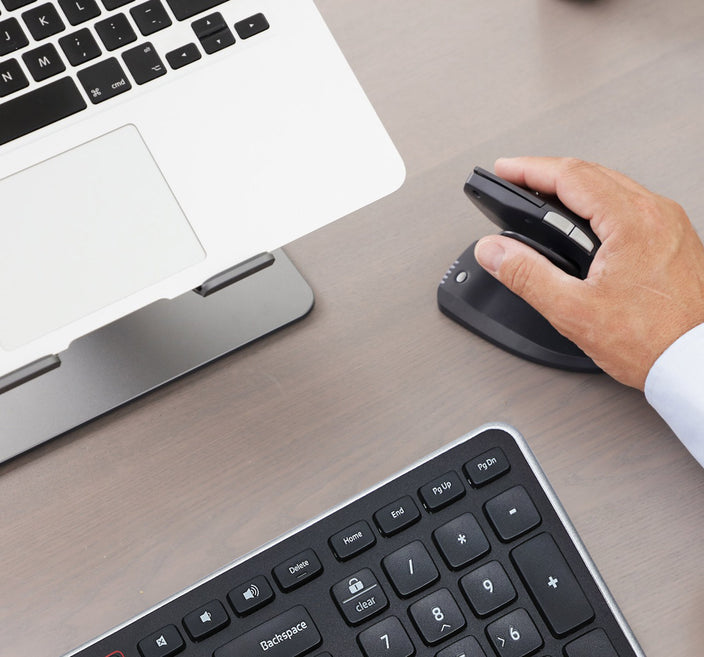When aiming to design the ideal home office, you must focus on creating a work oasis that meets your work needs and your body’s needs.
Sometimes, you design a space that meets all of your aesthetic needs. The colours fit well, the wall decorations match your vision, the rugs are lovely, and the feel of the space is spot-on.
Unfortunately, while pleasing on eyes, you have not considered your body’s needs. You are stiff in the neck, tired in the back, and sore in the shoulder when you finish your work in the afternoon. If that is the case, it can be terrible for your long term physical well-being.
Also read: Is your equipment in order? Setup for your flexible workstation
When you design your home office, you must think about ergonomics - you will spend quite a few hours here, so you might as well make them comfortable.
In this article, we guide you on setting up a beautiful home office that considers the needs of your aesthetic self and your body.
Designing the ideal home office: Three general principles
When designing your home office, it is a good idea to start with three well-founded pointers. Doing so increases the likelihood of keeping your body healthy and pain-free, which can be difficult when you lead a work-life that mainly takes place behind a desk and in front of a computer.

The rules for designing your home office are:
- Have room to move: You need to arrange your home office so that you have room to move. Changing working positions is the key to a physically healthy working life in your home office.
- Make it easy to get up: You must design your home office so that it is easy to get up and stretch your body. A height-adjustable desk is ideal, but your position should be easy and convenient to get up from in any case. The deep armchair rarely invites you to handle the next task standing.
- Have furniture and equipment that suits you: Your home office must be tailored to you. This means, for example, that your chair, desk, and equipment (keyboard, mouse, monitor, etc.) must have the correct dimensions and details according to your needs.
We have put together 8 simple tips on how you create the perfect work space:
- Separate your office from your living room. Separating the office from the other homerooms makes it easier to relax when you have free time and work without interruption. It gets pretty easy to do chores and take care of a filled dishwasher or a booming laundry while you should be working. Keeping it separated prevents distraction. If you do not have the luxury of separate rooms, never mind. You do not need a whole room - take the landing, the basement, the annex, vacant square meters under the stairs, or maybe even an insulated shed (if there is a window).
- Choose colours you like, which do not become disturbing. If you feel particularly inspired or productive when surrounded by green, go with a green nuance for the walls. However, always consider whether it should be that screaming turquoise or whether it becomes a little too much after 4-5 hours of work.
- Design according to light sources. Light may not be what you think about most - as long as it's there, it's okay, right? However, this is a misplaced assumption. Improper or inadequate lighting can result in overworked eyes. Go for a design where the light becomes a combination of daylight (which enters from the side) and light from a good table lamp (where the light comes from the other side).
- Make room for thoughts and ideas. Hang a bulletin board, a whiteboard, or a glass board on the wall so you have a place to store your creative (or perhaps meaningful) ideas.
- Create wholeness in the room. A home office can quickly become a messy affair where non-office stuff ends up filling the space. It is difficult to prevent the box with heirlooms from your great-grandmother or the children's discarded toys from moving in when there is a lack of space in the other rooms. If you lay a loose rug on the floor that matches the overall elements, you can create wholeness despite the many different elements in the room.
- Get the mess away. You get extra mental points if you choose a closed storage solution, which may even be mobile so that it can be removed. It allows you to declutter and avoid disturbances.
- Choose good furniture. Let's get the cards on the table. If you care a lot about design, it is probably not in the department of office furniture that you feel most happy. Office furniture rarely looks like something from Arne Jacobsen, Eames, or Marcel Breuer. But if you do not want to end up with back pain and a wry neck, then it is in the office furniture department that you should look for your desk and your chair for the home office.
- Choose good ergonomic equipment. The keyboard, mouse, and monitor will be the most critical equipment units in the home office for the vast majority of us. Applicable to all three is that they must support the correct working position and suit your individual needs.
In our ergonomic checklist for your workstation, we have listed all the details about what requirements your mouse, your monitor, and your keyboard must live up to.




